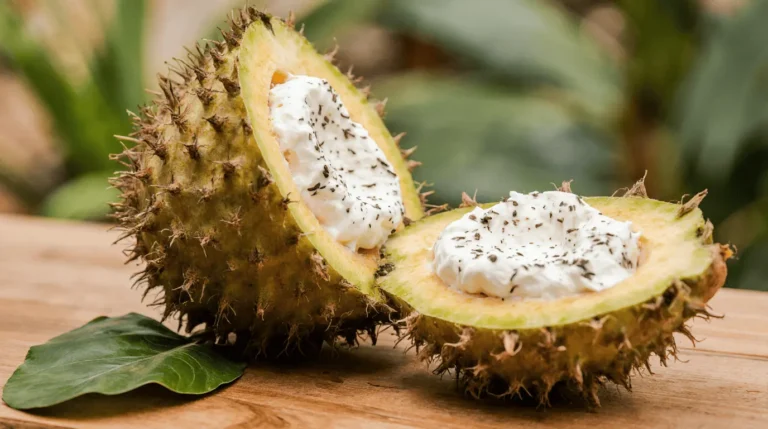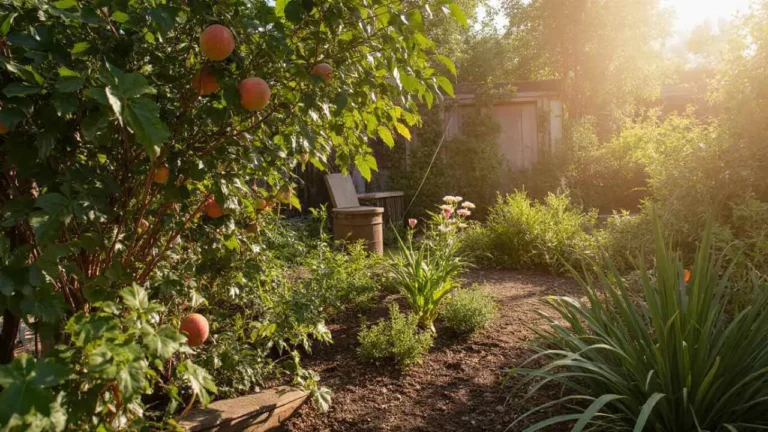🌿 Introduction – Rediscovering Nature’s Healing Power
For thousands of years, humans have looked to nature as the first and most trusted source of healing. Every leaf, fruit, and flower carries a story — one of balance, nourishment, and renewal. From tropical forests to small herbal gardens, plants have offered us food, fragrance, and medicine, shaping both ancient traditions and modern wellness practices.
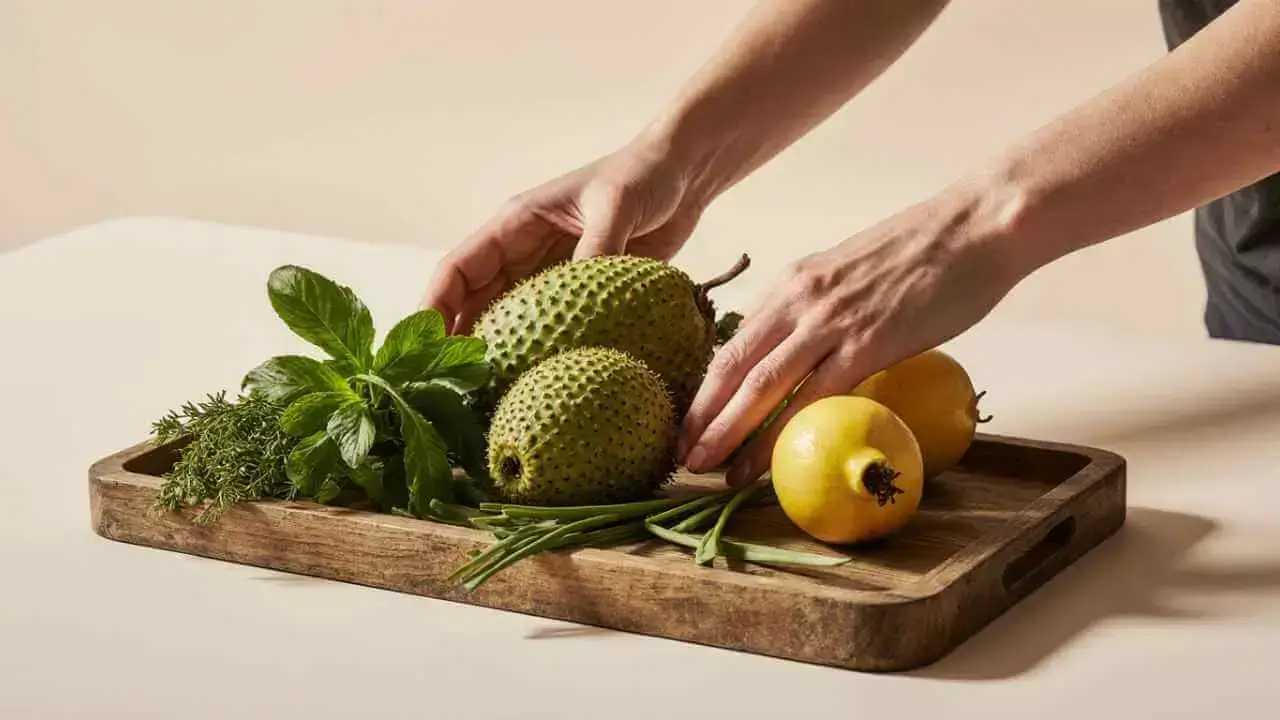
Today, this connection between people and plants is being rediscovered. In a world filled with synthetic options and fast-paced living, many are turning back to natural healing for its purity, sustainability, and harmony with the body’s natural rhythm. Herbal teas, fruit-based remedies, and plant extracts are no longer just traditional practices — they’re part of a growing global movement toward mindful, holistic living.
True wellness isn’t only about treating the body — it’s about nurturing the mind and respecting the environment that sustains us. This balance of body, mind, and earth lies at the heart of plant-based living. By growing and using healing plants at home, anyone can experience the peace and purpose that come from connecting directly with nature.
In this guide, we’ll explore how tropical and herbal plants — like soursop, ruda (rue), and blue java banana — serve as nature’s most powerful healers. Each offers unique health benefits, cultural wisdom, and simple ways to incorporate natural remedies into everyday life. Whether you’re seeking calm, vitality, or a deeper connection with the earth, this journey into natural healing will show that the path to wellness truly begins in your own garden.
🌱 Understanding Natural Healing and Its Benefits
Natural healing is a holistic approach that uses the gifts of the earth — plants, herbs, fruits, and natural elements — to restore the body’s balance and promote wellness. Rather than focusing solely on symptoms, it nurtures the entire system: body, mind, and spirit. Through centuries of traditional wisdom and modern understanding, people have learned how certain plants can help detoxify, calm, and strengthen the body naturally.
Unlike modern medicine, which often targets specific illnesses through chemical compounds or synthetic drugs, natural healing emphasizes prevention and harmony. It’s about supporting the body’s innate ability to heal itself — gently, gradually, and sustainably. While pharmaceuticals can offer quick relief, holistic wellness focuses on long-term vitality by improving immunity, reducing inflammation, and promoting emotional balance. Both systems have value, but when used together wisely, they can complement one another beautifully.
Tropical plants, in particular, play a vital role in natural healing. Fruits like soursop are packed with antioxidants and anti-inflammatory compounds that help protect cells and boost immunity. The ruda (rue) plant calms muscle tension and aids digestion, while the blue java banana provides natural energy, supports gut health, and encourages relaxation through its magnesium and tryptophan content. These botanical treasures show how deeply intertwined nature is with our health — offering nutrients, energy, and healing properties that modern science continues to uncover.
Still, it’s essential to approach natural remedies with awareness. Not all plants are suitable for everyone, and improper use can lead to unwanted effects. Consulting an herbal specialist or healthcare professional ensures that your healing journey is safe, personalized, and effective. When combined with mindfulness and care, natural healing becomes more than a practice — it becomes a lifestyle that celebrates harmony between people and the planet.
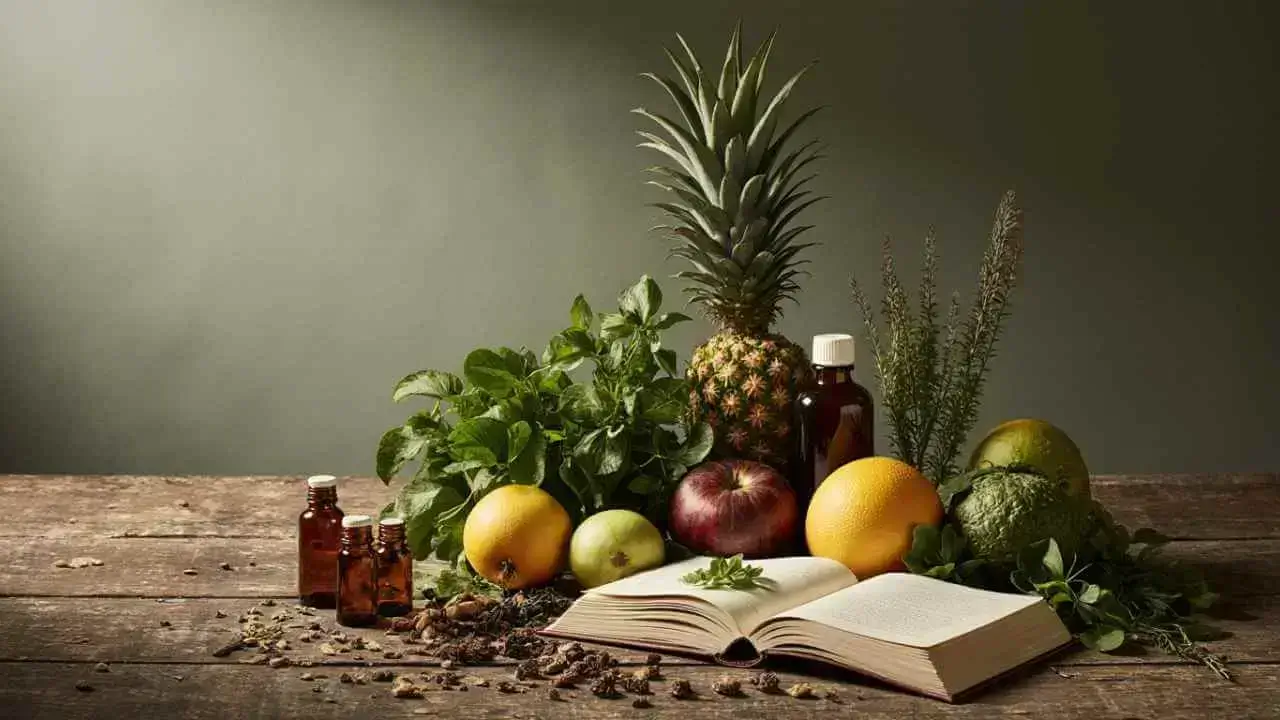
🍈 Tropical Fruits for Health and Healing
Tropical fruits are more than just delicious — they’re nature’s purest form of nourishment and medicine combined. Bursting with vitamins, minerals, antioxidants, and natural enzymes, these fruits play a vital role in maintaining energy, improving immunity, and supporting overall wellness. In many cultures, tropical fruits are part of traditional healing systems, valued not only for their flavor but also for their restorative properties.
From the immunity-boosting soursop to the creamy custard apple and the mood-lifting blue java banana, each fruit offers unique nutritional benefits and healing potential. Their rich colors and flavors are reflections of the powerful plant compounds they contain — the same compounds that help our bodies heal, rejuvenate, and thrive. Whether consumed fresh, brewed into teas, or used as natural skincare ingredients, tropical fruits bridge the gap between nourishment and natural medicine.
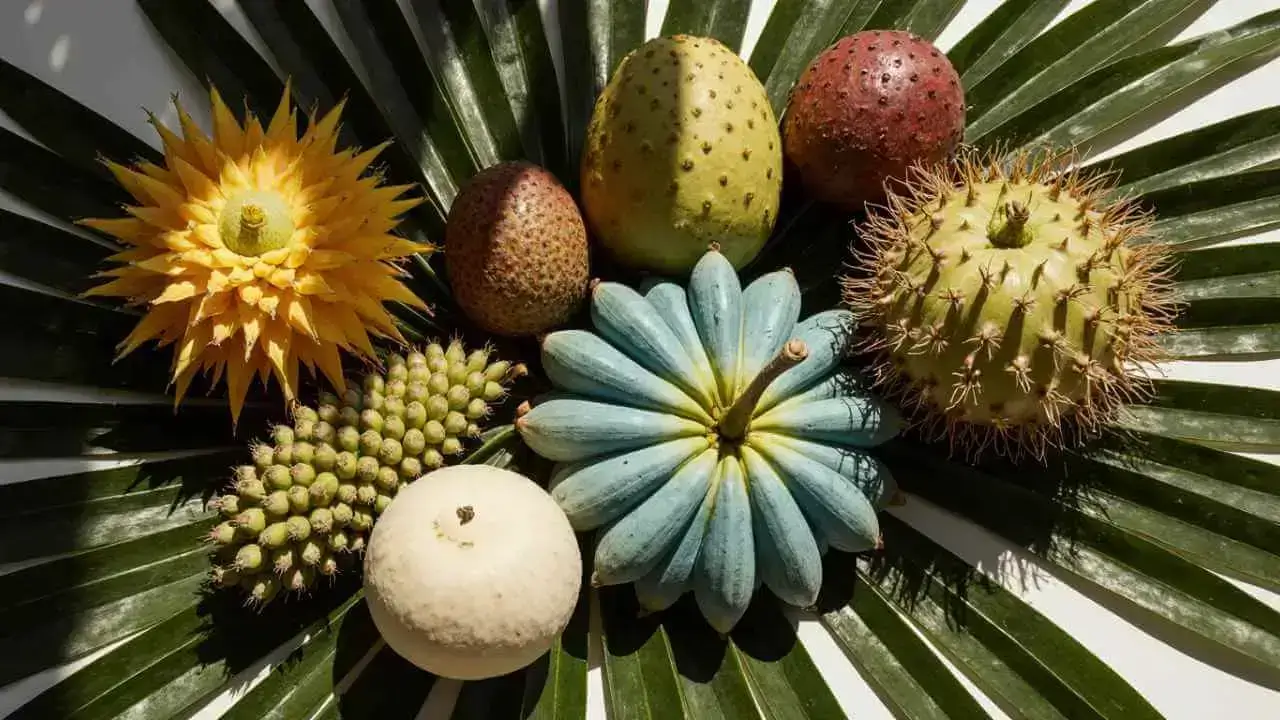
🌿 Soursop – The Leaf That Heals
Among tropical plants, soursop (Annona muricata) stands out as one of the most valued for both its fruit and its leaves. Known for its tangy-sweet flavor and creamy texture, soursop fruit provides vitamin C, B vitamins, and powerful antioxidants that boost immunity and fight oxidative stress. However, it’s the leaves that have gained immense popularity in traditional and modern herbal wellness circles.
Soursop leaves are believed to have anti-inflammatory, antioxidant, and immune-boosting properties that support natural healing. Used internally as tea or extracts, they help reduce inflammation, relieve pain, and promote restful sleep. Externally, they’re often applied as poultices or infused oils to soothe irritated skin and sore muscles.
From ancient tropical medicine to modern holistic practices, soursop continues to be celebrated as a healing tree — a symbol of balance between nourishment and natural restoration.
Read more: 7 Amazing Dried Soursop Leaves Benefits for Health

🍏 Custard Apple – Nature’s Creamy Energy Booster
While often mistaken for soursop, the custard apple (Annona reticulata) offers its own distinct benefits and personality. Known for its velvety sweetness and dessert-like flavor, custard apple is rich in magnesium, potassium, and iron — minerals that strengthen the body, improve blood flow, and support sustained energy.
In Ayurvedic medicine, the fruit has long been used to balance body heat, promote digestion, and rejuvenate tired systems. Its natural sugars make it a wonderful energy booster, while its high fiber content supports gut health. The creamy flesh not only satisfies your sweet cravings but also provides essential vitamins that aid in immune function and skin health.
Custard apple represents the soothing side of tropical wellness — comforting, nourishing, and naturally energizing.
Read more: 5 Shocking Differences: Soursop vs Custard Apple
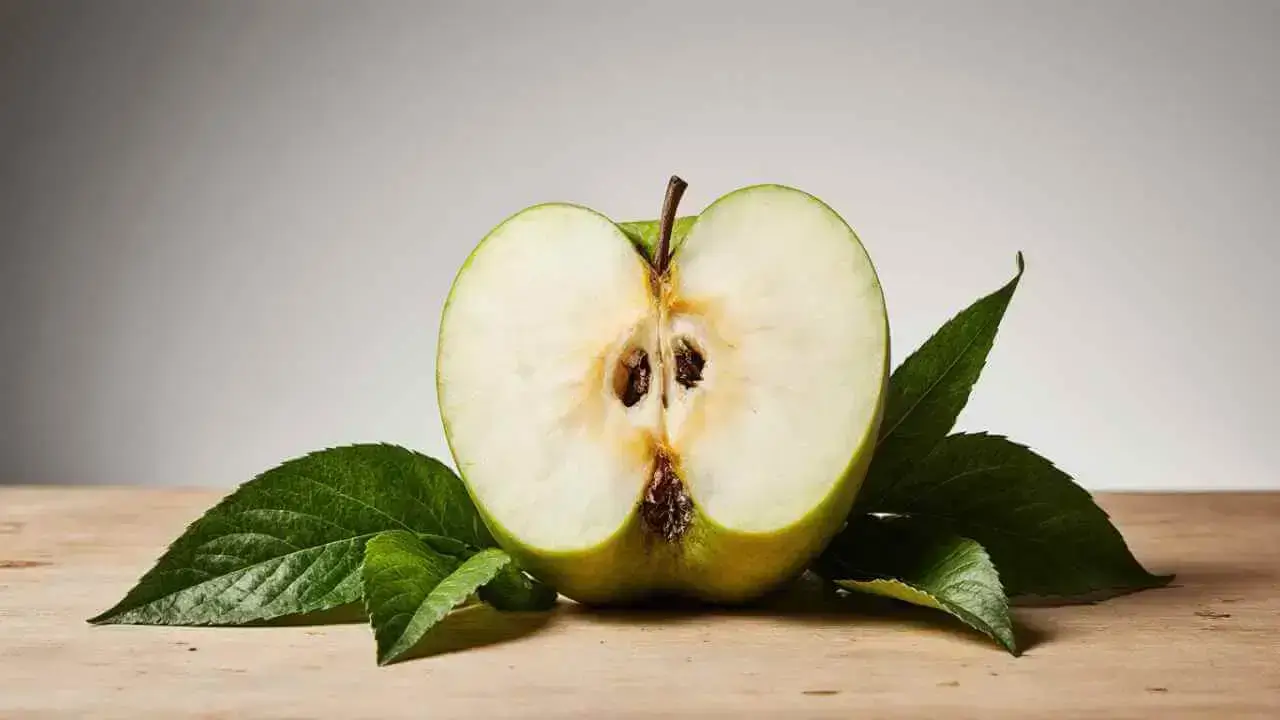
🍌 Blue Java Banana – The Tropical “Ice Cream” Fruit
The Blue Java Banana, affectionately known as the “ice cream banana,” is one of the most delightful fruits in tropical gardening and nutrition. Its soft, vanilla-flavored flesh feels like nature’s dessert, offering sweetness without processed sugar. Beyond taste, it’s packed with potassium, magnesium, and fiber, which contribute to heart health, digestion, and muscle recovery.
What truly sets the Blue Java apart is its connection to mental and emotional wellness. The fruit contains tryptophan, a natural compound that helps the body produce serotonin, the “happiness hormone.” This makes it a gentle, mood-lifting food that can reduce stress and promote better sleep. Easy to grow and adaptable to warm climates, this fruit adds not only flavor but also serenity to your wellness journey.
From its creamy taste to its calming benefits, the Blue Java Banana is nature’s way of showing that healing can be both delicious and joyful.
Read more: 5 Surprising Secrets Hidden Inside Blue Java Bananas

🌿 Medicinal & Spiritual Healing Plants
Beyond fruits, the true heart of natural healing lies in the herbs and botanicals that have supported human wellness for centuries. These plants are nature’s silent healers — purifying the body, calming the mind, and creating an atmosphere of harmony wherever they grow. In many cultures, herbs hold both medicinal and spiritual significance, acting as bridges between physical health and emotional balance. Whether used in teas, oils, or incense, their aroma and properties bring a deep sense of restoration and peace.
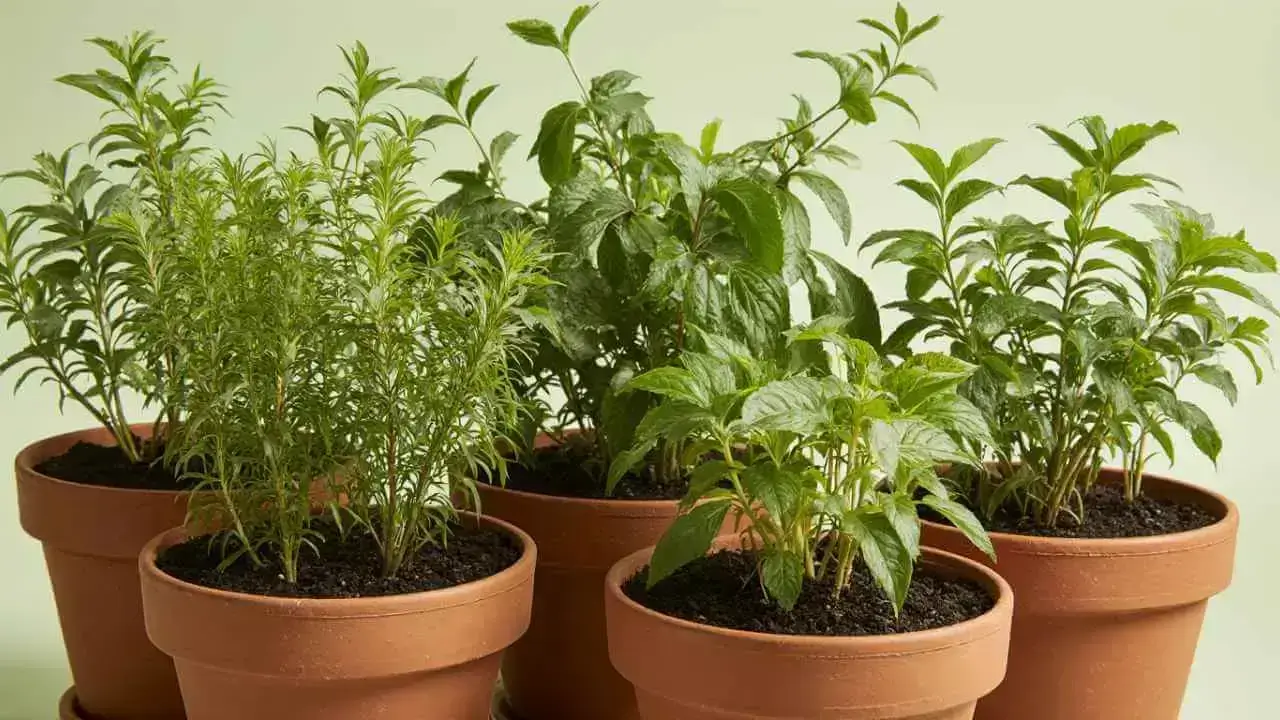
From the protective Ruda plant to everyday healing staples like turmeric, basil, and lemongrass, each herb plays a distinct role in maintaining wellness. They detoxify, energize, and nurture resilience — reminding us that the path to health often starts with something as simple as tending a small healing garden.
🌼 Ruda (Rue) – The Ancient Protector and Healer
Few herbs carry as much history and symbolism as Ruda, also known as Rue (Ruta graveolens). This ancient plant has been revered since Roman and Mediterranean times for both its medicinal and spiritual powers. With its distinctive blue-green leaves and strong aroma, Ruda has long been regarded as a symbol of protection, purification, and strength.
In herbal medicine, Ruda is valued for its anti-inflammatory, antispasmodic, and insect-repelling properties. It’s often used to ease muscle tension, aid digestion, and deter pests naturally. Externally, it can be applied in diluted forms to relieve cramps and soothe discomfort, while in spiritual practices, its fragrance is believed to cleanse negative energy and bring emotional calm.
Across Mediterranean, Jewish, and Latin American traditions, Ruda holds an honored place in rituals of healing and protection. Whether hung in doorways or used in sacred baths, it represents the timeless human desire for balance — between the body, the soul, and the world around us.
Read more: 7 Fascinating Benefits of the Ruda Plant You Must Know

🌱 Other Healing Herbs to Grow at Home
Creating a healing garden at home doesn’t require rare plants — it begins with simple, everyday herbs that offer powerful benefits. These plants thrive in pots or small garden spaces, filling your home with fragrance and wellness.
- Lemongrass – Known for its refreshing citrus scent, lemongrass supports detoxification, aids digestion, and helps reduce stress when brewed as tea. Its essential oils are also used for aromatherapy and natural insect repellent.
- Turmeric – A golden root with potent anti-inflammatory and skin-healing properties. Used in both Ayurveda and modern wellness, it supports joint health, enhances immunity, and adds warmth to every dish or drink.
- Basil & Mint – These fragrant herbs promote respiratory clarity, reduce headaches, and help improve focus and calm. Fresh basil boosts the immune system, while mint’s cooling effect soothes digestion and refreshes the mind.
Together, these healing herbs transform your home into a living apothecary, offering daily access to nature’s remedies for body and spirit.
Read Also: Tropical Fruit Trees: Grow Exotic Paradise at Home (Grow Guide)
🌱 How to Grow Your Own Healing Garden
Creating your own healing garden is more than just planting herbs or fruits — it’s about cultivating a personal sanctuary of peace, health, and connection with nature. Whether you have a sprawling backyard or a small balcony, you can design a space that nurtures both your body and mind. Each plant you grow becomes a living reminder that healing starts with mindful care and a touch of sunlight.

A healing garden combines natural therapy with beauty. The act of gardening itself reduces stress, boosts mood, and provides a sense of accomplishment. Watching your plants thrive becomes a form of meditation — grounding you in the moment and reconnecting you with the earth’s rhythm.
🌿 1. Start with the Basics: Soil, Sun, and Water
Healthy plants begin with a strong foundation. Choose well-draining, nutrient-rich soil—either sandy or loamy—to prevent root rot and allow steady airflow. For most tropical and herbal plants, a pH between 5.5 and 7.0 works best.
Place your plants in a spot that receives at least 6–8 hours of sunlight daily. Herbs like ruda, basil, and lemongrass thrive under direct light, while plants like soursop prefer filtered sun if grown in containers. Water balance is key — keep soil moist but not soggy. Overwatering can suffocate roots, while underwatering can cause wilting and stress. A simple rule: water when the top inch of soil feels dry.
🌴 2. Choose the Right Plants for Your Space
Even in small areas, you can grow plants with healing benefits that offer both beauty and purpose.
- Soursop (Annona muricata): Perfect for warm, humid spaces. Can be grown in large containers or small garden beds, offering edible fruits and medicinal leaves.
- Ruda (Rue): Hardy, drought-tolerant, and pest-resistant. Its fragrant leaves bring protective energy and natural healing properties to your garden.
- Blue Java Banana: Great for sunny balconies or courtyards. Adds ornamental value and provides delicious, mood-boosting fruit rich in magnesium and potassium.
Each plant complements the other — combining tropical charm with wellness benefits.
🌼 3. Embrace Container Gardening for Flexibility
For apartment dwellers or those with limited yard space, container gardening is the perfect solution. Pots and planters allow you to control soil quality, moisture, and placement. Use unglazed clay pots for herbs like rue and basil to help regulate moisture, and large, deep containers for fruit trees like soursop or banana to support root growth.
Move containers to adjust for sunlight and weather, and group plants with similar needs together. This setup not only keeps your space tidy but also makes your healing garden easy to manage year-round.
💚 4. Gardening as a Path to Mental Wellness
Tending to plants is one of the most natural ways to reduce stress and anxiety. The gentle routine of watering, pruning, and observing growth cultivates mindfulness and emotional balance. Studies show that interacting with greenery lowers cortisol levels and improves overall mood — transforming your garden into a living form of therapy.
Even the smallest act, like brewing tea from your homegrown herbs, can bring a sense of calm and gratitude. Over time, your garden becomes more than just a collection of plants — it becomes a reflection of your inner peace and wellness journey.
Tip: Start small. Choose two or three plants that resonate with your healing goals — perhaps one fruit, one herb, and one flower. As they flourish, so will your connection with nature. Your healing garden will not only nourish your body but also feed your spirit, one leaf at a time.
🌼 DIY Natural Remedies and Daily Wellness Practices
One of the most empowering parts of embracing natural healing is learning to create your own DIY remedies and rituals at home. By combining fruits, herbs, and mindful daily practices, you can nurture your body and soul with the simplest tools nature provides. These small, intentional acts — brewing tea, massaging with herbal oil, or blending a fruit smoothie — remind us that wellness is both accessible and personal.

From soothing soursop tea to rejuvenating rue oil and uplifting banana smoothies, these easy recipes help bring vitality, balance, and calm into everyday life.
🍃 1. Soursop Leaf Tea – Calm, Clarity, and Immunity
How to make:
- Rinse 3–5 dried or fresh soursop leaves.
- Add to 2 cups of water and boil for 15–20 minutes.
- Let cool slightly, strain, and add a touch of honey or lemon for flavor.
Benefits:
This gentle tea helps reduce inflammation, support immunity, and calm the mind. Soursop’s natural antioxidants combat stress and fatigue, making it an ideal drink before bedtime or after a long day.
☀️ Best time to drink: Evening or during moments of relaxation.
🌿 2. Rue Oil (Ruda Oil) – Protection and Muscle Relief
How to make:
- Place a handful of dried rue (ruda) leaves in a clean glass jar.
- Pour in 1 cup of olive or coconut oil.
- Seal and leave in a sunny spot for about 2 weeks, shaking daily.
- Strain and store the infused oil in a dark glass bottle.
Uses:
Rue oil has anti-inflammatory and antispasmodic properties that help ease muscle tension and minor aches. It’s also traditionally used for spiritual cleansing — massaging a few drops onto the wrists or temples is believed to ward off stress and negativity.
⚠️ Note: Always perform a patch test before applying to skin and avoid during pregnancy.
🍌 3. Blue Java Banana Smoothie – Energy & Emotional Balance
How to make:
- Blend 1 ripe Blue Java banana with ½ cup yogurt, ½ cup coconut milk, and a drizzle of honey.
- Add a few ice cubes and blend until creamy.
Benefits:
This smoothie is a delicious source of magnesium, fiber, and natural serotonin boosters that uplift mood, improve focus, and support relaxation. It’s nature’s own comfort drink — refreshing, energizing, and deeply satisfying.
☀️ Best time to drink: Morning or midday for natural vitality.
💧 4. Herbal Infusions and Poultices – Simple Home Healing
- Infusions: Steep herbs like chamomile, basil, or mint in hot water to make calming teas that aid digestion and reduce anxiety.
- Poultices: Mash fresh soursop or rue leaves and apply gently to skin irritations or sore joints to soothe inflammation.
These simple, time-honored methods connect you with the physical touch of nature’s medicine — no chemicals, no additives, just pure plant essence.
🌸 5. Daily Wellness Rituals – Harmony of Body and Spirit
Creating small rituals transforms healing into a lifestyle. Try starting or ending your day with one or more of these practices:
🌅 Morning Ritual:
- Brew a warm cup of soursop or lemongrass tea.
- Spend 5 minutes in sunlight or gratitude meditation.
🌿 Midday Reset:
- Take deep breaths with aromatic herbs like mint or basil.
- Massage your hands or temples with diluted rue oil to release tension.
🌙 Evening Routine:
- Sip Blue Java banana smoothie or turmeric milk.
- Practice gentle stretching or journaling to unwind.
By incorporating these DIY remedies and wellness habits, you create a rhythm that honors both the body and the spirit. Every cup, every leaf, and every mindful moment becomes a small step toward living in balance with the healing energy of nature.
⚕️ Common Myths and Safety Tips in Natural Healing
As natural healing grows in popularity, so do the misconceptions surrounding it. While herbal remedies and plant-based wellness practices are powerful tools for health, it’s important to remember that “natural” doesn’t always mean risk-free. Every plant contains active compounds that can heal when used properly — but can also cause harm if misused, overused, or combined incorrectly. True wellness comes from balance, awareness, and informed care.

🌿 **Myth 1: “If It’s Natural, It Has No Side Effects”
The Reality:**
Even natural ingredients can cause reactions depending on a person’s health condition, age, or medication use. Herbs like rue (ruda), soursop, and turmeric contain strong bioactive components that must be used in moderation. For instance, rue oil can irritate the skin if applied undiluted, and soursop leaves—when over-brewed—may lead to drops in blood pressure. Nature’s remedies are powerful, but power always requires responsibility.
🌱 **Myth 2: “More Is Better”
The Reality:**
Using herbal remedies excessively does not increase their effectiveness. In fact, it can have the opposite effect, stressing the body’s systems. For example, drinking multiple cups of soursop tea daily can lead to fatigue or nausea, while overusing rue can be toxic to the liver. Always follow recommended guidelines — one to two cups of herbal tea per day, and only small, diluted doses of essential oils or extracts when needed.
🧘♀️ **Myth 3: “Herbal Healing Can Replace All Modern Medicine”
The Reality:**
Natural and modern medicine should complement, not compete with, one another. While herbs and fruits can prevent illness, boost immunity, and promote recovery, they may not be sufficient for treating serious medical conditions. The best results come from integrative wellness — combining natural remedies with professional medical advice for a balanced approach to health.
⚠️ Safety Guidelines for Using Potent Herbs
- Rue (Ruda): Avoid during pregnancy — it may stimulate uterine contractions. Always handle with gloves to prevent skin irritation.
- Soursop: May lower blood pressure; people with hypotension or those taking blood-thinning medication should consult a doctor first.
- Turmeric: Safe in small culinary doses but can interfere with certain medications (like anticoagulants) when consumed in high supplement form.
- Lemongrass and Basil: Generally safe, but concentrated oils should be diluted before topical use to prevent irritation.
💬 Consult Before You Heal
Before beginning any new herbal regimen, consult a licensed herbalist, naturopath, or healthcare provider — especially if you’re pregnant, breastfeeding, or managing a medical condition. Natural remedies can beautifully support healing when guided by knowledge, but guesswork and overconfidence can turn even the gentlest herb into a risk.
By respecting both the wisdom of nature and the precision of modern science, you can embrace natural healing safely — allowing your wellness journey to be guided by balance, mindfulness, and care.
🔬 Combining Tradition and Modern Science
For centuries, traditional healers across the world have relied on the wisdom of plants — using leaves, roots, and fruits to treat the body, calm the mind, and restore balance. Today, modern science is beginning to rediscover and validate much of what ancient cultures already knew: that nature holds powerful compounds capable of supporting human health in remarkable ways.
Researchers now study these plants not just as folk remedies but as sources of potent bioactive compounds — natural chemicals that play vital roles in healing, protection, and regeneration. This exciting intersection of tradition and innovation marks a new era where ancestral knowledge and scientific discovery walk hand in hand.
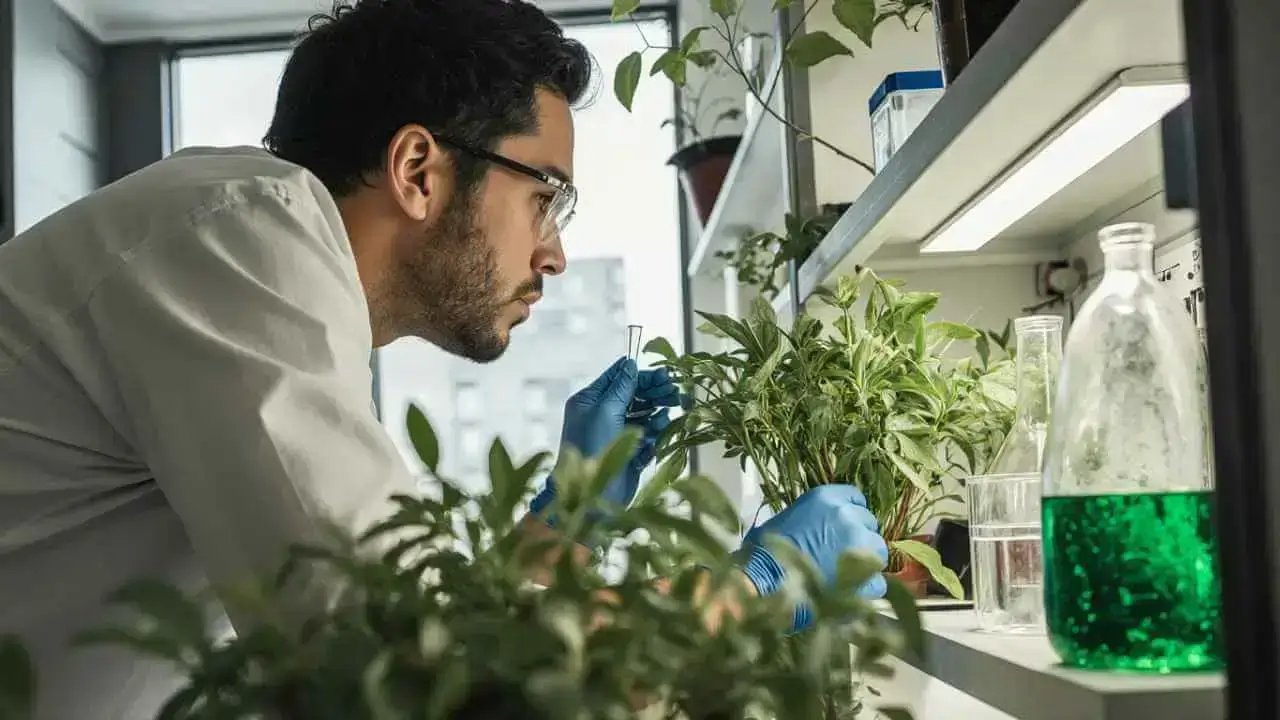
🌿 Modern Studies Reviving Ancient Herbal Wisdom
Science is catching up with the secrets of traditional medicine. Studies on plants like soursop, rue, and turmeric reveal measurable benefits once known only through cultural experience.
- Soursop (Annona muricata): Modern research highlights its rich concentration of acetogenins — natural compounds that exhibit antioxidant and anti-inflammatory properties, supporting cellular health and immune defense.
- Rue (Ruta graveolens): Scientists have identified rutin, a powerful bioflavonoid that strengthens blood vessels, reduces inflammation, and provides protective benefits for heart and skin health.
- Turmeric and Lemongrass: Contain curcumin and citral, respectively, both recognized for their roles in reducing oxidative stress and promoting overall wellness.
By merging traditional uses with laboratory evidence, these discoveries bring credibility to ancient herbal practices, creating a bridge between cultural heritage and clinical research.
🌸 The Power of Antioxidants and Plant Compounds
At the core of both ancient and modern healing is the concept of balance — keeping the body free from toxins and oxidative damage.
Antioxidants found in tropical plants and herbs neutralize free radicals, helping to:
- Protect cells from aging and disease.
- Improve skin elasticity and natural glow.
- Support immunity, digestion, and mental focus.
Compounds like rutin (in rue), acetogenins (in soursop), and magnesium (in bananas) demonstrate that the synergy of natural elements can rival synthetic supplements when used mindfully.
🌱 Encouraging Evidence-Based Natural Healing
The future of natural healing lies in evidence-based herbalism — using plants not just because they’re traditional, but because science confirms their benefits and safety. More universities and wellness institutions are now integrating phytotherapy research, exploring how plant compounds interact with human biology.
This modern validation doesn’t replace traditional knowledge — it strengthens it. By studying herbs through both scientific precision and ancestral respect, we ensure that nature’s remedies continue to serve humanity safely and effectively.
🌾 The Rise of Organic Farming and Herbal Skincare
With the growing awareness of sustainability, more people are embracing organic farming, cultivating herbs and tropical fruits without synthetic pesticides or fertilizers. This not only preserves the environment but also enhances the nutritional potency of plants.
Similarly, herbal skincare is becoming a key part of natural wellness, using plant-based oils, extracts, and botanicals for cleansing, healing, and rejuvenation. From soursop leaf toners to rue-infused oils and banana-based moisturizers, the shift toward natural beauty mirrors the larger movement of living closer to nature.
In essence, combining tradition with modern science allows us to celebrate the best of both worlds — the timeless wisdom of our ancestors and the clarity of modern research. Together, they guide us toward a future where healing is not just natural, but also intelligent, sustainable, and deeply connected to the living world.
🌿 Emotional and Environmental Wellness Through Nature

True wellness extends beyond the body — it’s also about the mind, spirit, and environment we live in. Nature has an incredible ability to heal on every level, offering calm to the restless mind and renewal to tired souls. In today’s fast-paced, digitally-driven world, reconnecting with the earth is one of the most powerful ways to restore balance and clarity. Gardening, in particular, acts as a bridge between self-care and planet care, allowing us to heal ourselves while nurturing the environment that sustains us.
🌸 Gardening as Therapy: Cultivating Peace and Mindfulness
Tending to plants, watering the soil, and watching new growth unfold — these simple acts are deeply therapeutic. Studies show that gardening reduces stress, anxiety, and burnout, helping to lower cortisol levels and boost serotonin. The rhythmic nature of gardening offers a form of active meditation, grounding us in the present moment while encouraging patience, gratitude, and self-awareness.
Growing tropical plants like soursop, ruda, and lemongrass connects us with life’s natural cycles — reminding us that healing takes time and care. Each leaf and bloom becomes a reflection of inner growth, turning your garden into a living expression of emotional balance.
🦋 Creating Eco-Harmony with Pollinator-Friendly Herbs
A healing garden not only benefits you but also supports the creatures that sustain the planet. Planting pollinator-friendly herbs such as rue, lemongrass, mint, and basil helps attract bees, butterflies, and other beneficial insects essential for ecological balance.
For example, rue serves as a host plant for swallowtail butterflies, while lemongrass provides a natural scent barrier that deters pests without harming pollinators. By including a variety of herbs and flowering plants, you create a miniature ecosystem that promotes biodiversity and keeps your garden vibrant year-round.
This kind of eco-harmony turns your healing space into more than just a garden — it becomes a sanctuary for life, growth, and renewal.
🌱 Sustainable Gardening for a Greener Lifestyle
Caring for your garden sustainably ensures that your healing practices also protect the planet. Simple, mindful choices can make a big difference:
- Compost kitchen waste to enrich soil naturally.
- Use rainwater or greywater for irrigation.
- Avoid chemical pesticides — rely on companion planting and natural repellents like rue and neem.
- Grow native or adaptive species suited to your region’s climate for water efficiency.
By adopting these eco-friendly habits, you align your wellness journey with environmental stewardship — healing both yourself and the earth simultaneously.
When we nurture nature, nature nurtures us back. Gardening for emotional and environmental wellness isn’t just about growing plants — it’s about growing peace, gratitude, and harmony. Every bloom, every butterfly, every breath of fresh air becomes a reminder that in healing the planet, we’re ultimately healing ourselves.
🌍 Final Thoughts – Embrace Healing from the Earth
At the heart of all wellness lies one timeless truth — nature heals. Every leaf, fruit, and flower carries the potential to restore balance, peace, and vitality to our lives. Whether it’s sipping calming soursop tea, inhaling the soothing scent of ruda, or simply feeling the soil between your hands, nature offers a kind of healing that no laboratory can replicate — one that nurtures the mind, body, and soul together.
You don’t need acres of land or an expert’s touch to begin. Even a single healing plant — a pot of lemongrass on the balcony, a small rue bush by the window, or a young soursop tree in the yard — can transform your home into a space of renewal. The act of caring for it connects you with something greater: the rhythm of growth, the cycle of life, and the quiet strength that comes from living in harmony with the earth.
Now is the perfect time to reconnect with nature’s ancient wisdom and rediscover the beauty of self-healing.
Let every plant you grow and every herbal remedy you make remind you that the world’s greatest medicine often begins in your own garden.
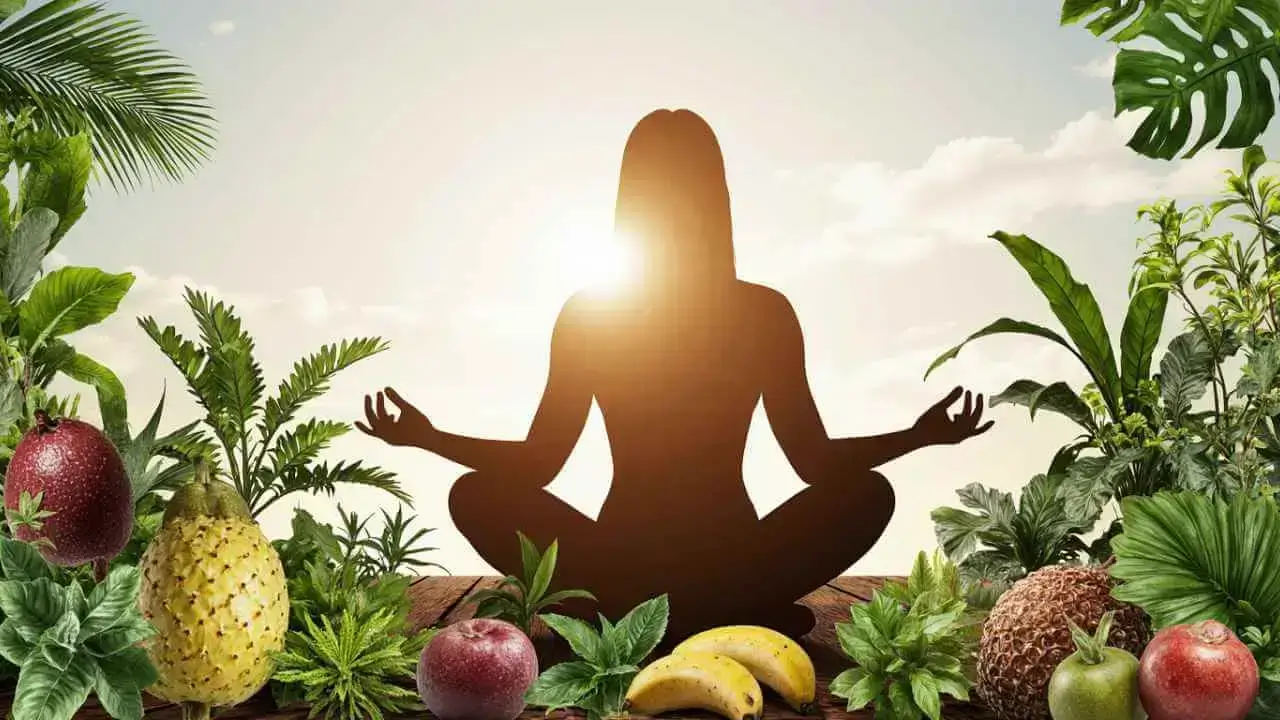
🌿 Call to Action:
Ready to begin your journey into natural healing?
Explore our individual guides on Soursop, Ruda, and Tropical Fruits — and let nature’s remedies bring balance, wellness, and serenity into your everyday life.
🌿 FAQs – Natural Healing & Wellness
Q1: What are the best tropical plants for natural healing?
Some of the most effective tropical plants for natural healing include soursop (for immune support and anti-inflammatory benefits), ruda (rue) (for muscle relaxation and spiritual cleansing), lemongrass (for detox and digestion), and blue java banana (for mood enhancement and natural energy). Each offers unique medicinal and restorative qualities that support both physical and emotional wellness.
Q2: Can I grow medicinal plants indoors?
Yes! Many healing plants thrive beautifully indoors. Rue, basil, mint, and lemongrass grow well in pots placed near sunny windows. For tropical varieties like soursop or banana, you can use large containers or mini-greenhouse setups with warm, humid conditions. Just ensure good sunlight, drainage, and occasional pruning to keep your plants healthy year-round.
Q3: Are soursop leaves safe for daily use?
Soursop leaves can be consumed safely in moderate amounts, usually as herbal tea once or twice a day. They’re known to support relaxation, immunity, and digestive balance. However, overuse or concentrated extracts should be avoided, especially for pregnant women or those with low blood pressure. Always consult a healthcare professional before adding soursop tea to your daily wellness routine.
Q4: What’s the best way to make herbal tea for relaxation?
To make a soothing herbal tea:
- Boil 1–2 cups of water.
- Add 3–5 dried or fresh leaves (such as soursop, rue, or lemongrass).
- Simmer for 10–15 minutes, then strain.
- Add honey or lemon for flavor if desired.
This simple ritual calms the mind, relaxes the body, and helps you unwind — a perfect addition to morning mindfulness or bedtime relaxation.
Q5: How can I start a small home wellness garden?
Start by selecting easy-to-grow medicinal plants like rue, lemongrass, basil, or mint. Choose containers with drainage holes, fill them with nutrient-rich, well-draining soil, and place them in a sunny spot. Water only when the top inch of soil feels dry. Incorporate pollinator-friendly herbs and compost to enhance sustainability. Even a few pots on your balcony can become a powerful source of daily healing and joy.
✨ Nature’s remedies don’t just grow in gardens — they grow in the care, patience, and peace you nurture along the way.


